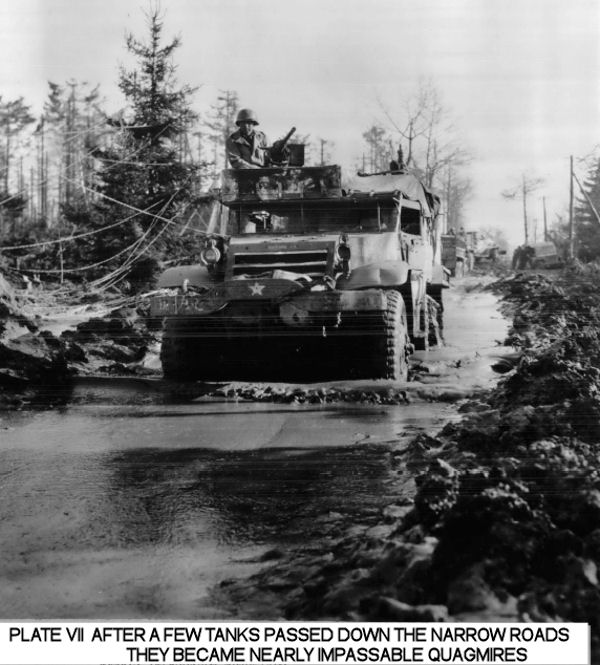CHAPTER V
The 70th Tank Battalion in support of the 4th Infantry Division
Supporting the major effort of the 1st Infantry Division in the VII Corps zone was the 4th Infantry Division, which fought through the HÜRTGEN FOREST to protect the south flank of the Corps and to seize crossings of the ROER at DÜREN and south thereof. The presence of the 4th Division and its attached 70th Tank Battalion was a well-guarded secret since they were to fight through a portion of the forest where no American troops had attempted an offensive since the 47th Regiment reached SCHEVENHÜHUTTE two months previously.
The immediate objective assigned the division by VII Corps was to seize the main HÜRTGEN-DÜREN ROAD, which would facilitate the capture of the ROER dams and a crossing of the ROER RIVER. Early in November General Eisenhower had told all commanders in the 4th Division, "This is the big push of the war to break the German's back. It is entirely conceivable that the war will be over by Christmas if this attack is successful." (1)
On 16 November 1944 the 70th Tank Battalion, attached to the 4th Infantry Division, pushed off into what was to prove its most grueling battle in Europe. To understand what kind of unit the 70th was, it is necessary to see what experience it had prior to HÜRTGEN.
The 70th Tank Battalion had fought in Africa as a light tank battalion. In November 1943 was transferred to England, re-designated as a medium tank battalion, and attached to the 4th Division for amphibious training. From England the battalion went to Normandy on D~Day, across France, and finally to the HÜRTGEN FOREST still accompanying the 4th Division. The unit entered the HÜRTGEN FOREST a tough, battle-seasoned outfit with high morale and good esprit de corps.
The experience of the 4th Division in the HÜRTGEN FOREST operation was characterized by severe fighting and extreme weather conditions. The troops of the 4th found that all routes, fire breaks and trails were heavily mined and covered by automatic weapons fire. Added to the casualties suffered in combat were large numbers of troops made helpless by trench foot. Companies which were brought up to strength by replacements would be found two days later with less than 50% strength remaining. Objectives were sometimes taken by companies consisting of 20, 25 or 45 men. In addition to combat in the forest it was necessary for the division to construct and maintain a road net within its zone, hampered by mud and unceasing artillery fire.


